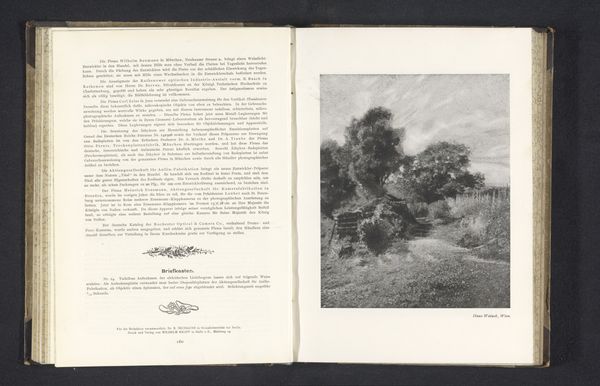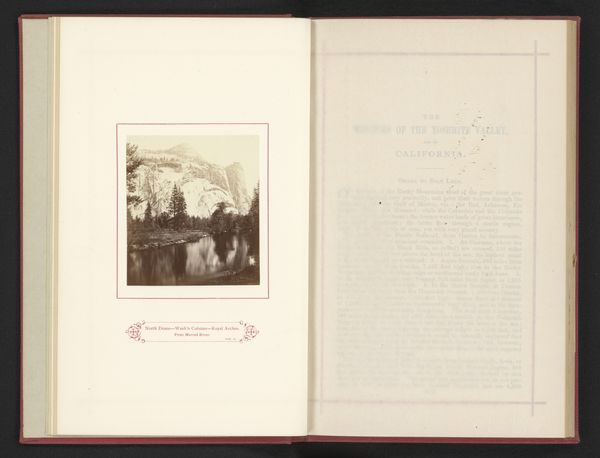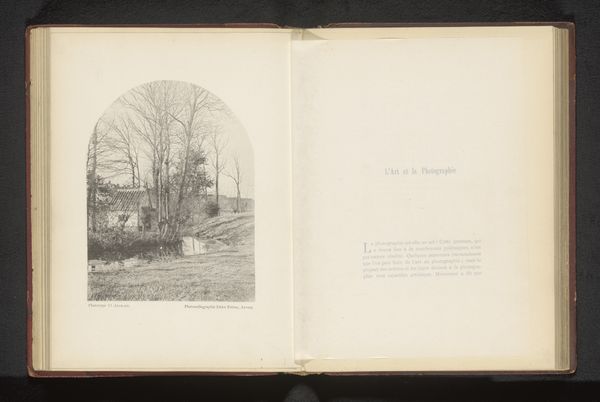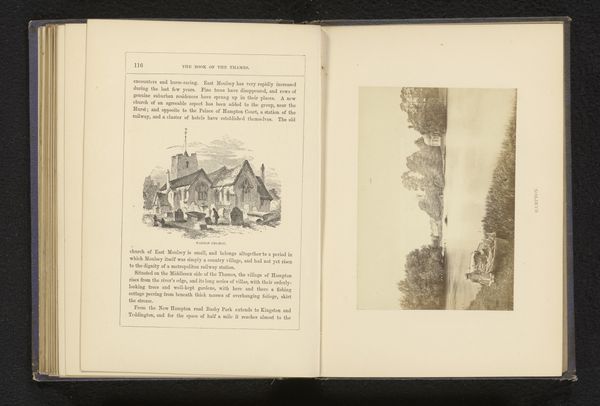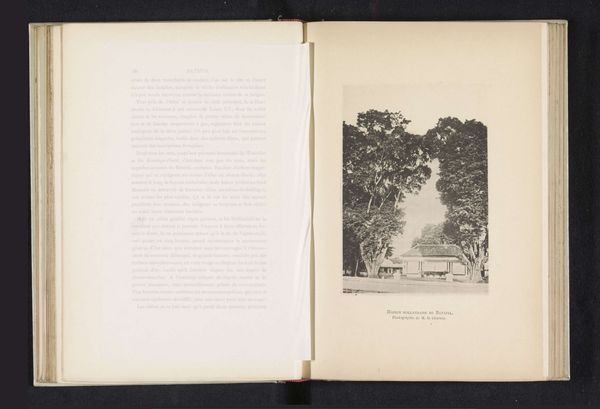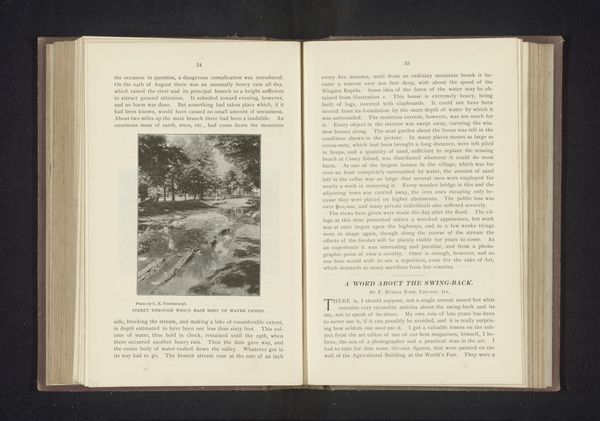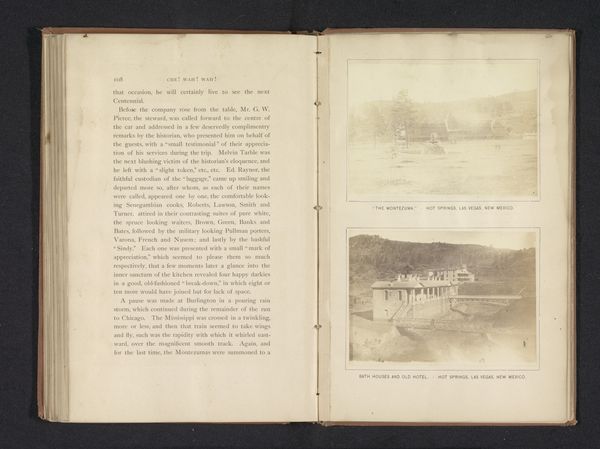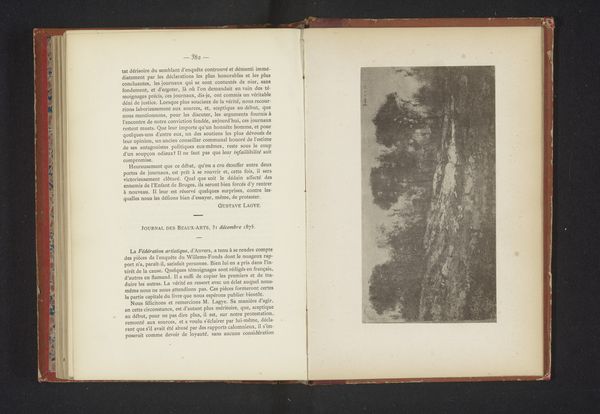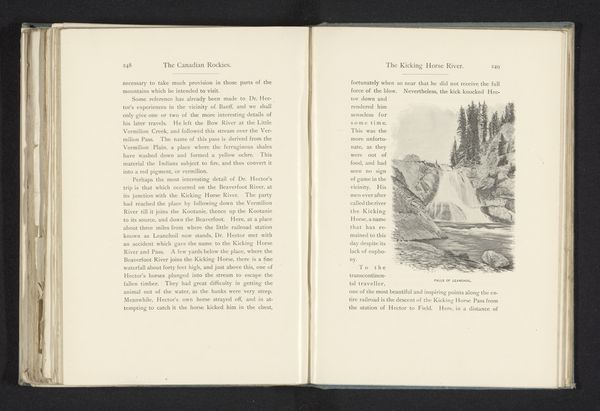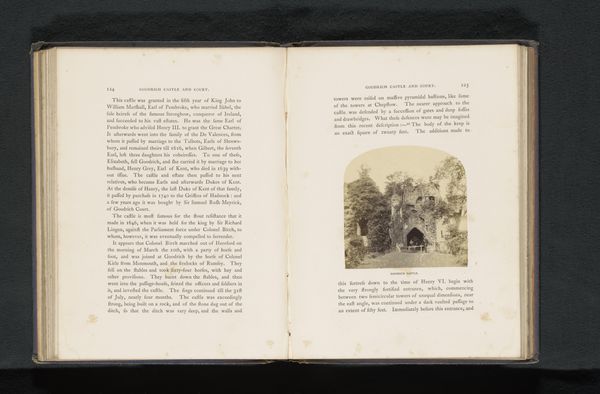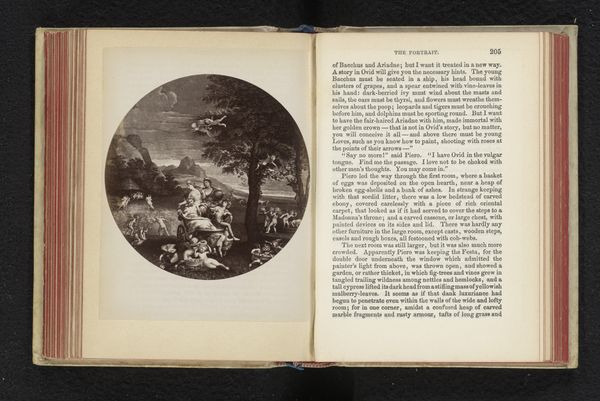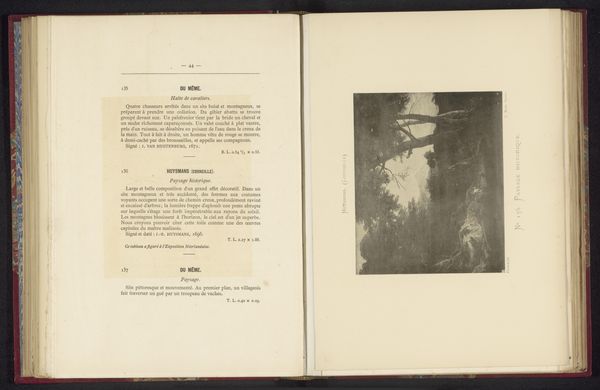
Reproductie van een schilderij van een gezicht op een tempel door Hubert Robert before 1894
0:00
0:00
Dimensions: height 210 mm, width 137 mm
Copyright: Rijks Museum: Open Domain
Curator: Here we have a print, an engraving in fact, from before 1894 after a painting by Hubert Robert depicting a view of a temple. It’s currently attributed to Berthaud Frères. What’s your first impression? Editor: Stark. There’s a lot of gray tonality, and it feels aged, unsurprisingly. There's a deliberate crumbling effect that feels incredibly romantic, even while being in grayscale. I wonder how the printmaking process shapes that aesthetic. Curator: Considering this is a reproduction, the means of production are key. It raises questions about accessibility of art. Were these prints meant for mass consumption, making art more democratic, or were they luxury items themselves? And how did Berthaud Frères, as printmakers, interpret Robert’s original work? What choices did they make in terms of line, tone, and emphasis? Editor: Definitely. I'm curious about the people within the landscape – they are dwarfed by the classical structure and the landscape itself. It highlights themes of human impact on and relationship to monumental spaces, as well as raising issues of class; who had access to such places or, at least, images of them? Curator: Right, this also fits within the broader context of Neoclassicism. It seems that a new culture for classical art had sprung forth from earlier movements, making objects of classical themes available to an expanding bourgeois class in affordable editions. These kinds of publications and printmaking techniques helped disseminate those images more widely than ever before. Editor: This is where class intersects with the artistic interpretation of space and antiquity. Who were Robert's patrons? How might his vision have influenced their socio-political identities? What’s particularly interesting is how these classical structures also stand in ruin; an aesthetic commentary on shifting political power and class structures? Curator: Exactly! I appreciate your observations on that point. By focusing on the materiality of the print, and understanding its reproductive process, it allows us to delve more deeply into the society of the period and Robert's place within the changing conditions for art. Editor: And situating this image within the era’s complex social structures offers an incisive commentary on enduring, material realities as they pertain to historical representations and who has the access, culturally and economically, to dictate its narrative. Curator: Very insightful. The implications extend beyond simply looking; it compels an understanding of both artistic skill, access to resources, and the shaping of taste in culture. Editor: Yes, thank you, this perspective adds to our appreciation of Robert’s image, of course, but the work and craft of Berthaud Frères itself.
Comments
No comments
Be the first to comment and join the conversation on the ultimate creative platform.
